| Fabric name: |
Spandex Fabric |
| Also called: |
Lycra, elastane |
| Breathability: |
High |
| Moisture absorption range: |
Small |
| Elongation: |
Excellent, can be stretched 50%-300%. |
| Dyeability: |
Good, good affinity for dyes |
| Heat resistance: |
Melting point 200-300℃ |
| Chemical resistance: |
Resistant to dilute acid and alkali |
| Sunlight resistance: |
Sunlight can be 40H, the strength is about 10%-20% lower, slightly yellowing. |
| Abrasion resistance: |
Strong, in the elongation range of 50%-300% can wear 10,000 times without breaking. |
| Chlorine resistance: |
Very poor |
| Whether pilling: |
Not easy to pilling |
| Main origin: |
China |
| Specification: |
20D, 30D, 40D, 70D, 105D, 140D |
| Applications: |
Professional sportswear, fitness and exercise clothing, diving suits, swimming suits, competition swimsuits, basketball uniforms, etc. |
A lot of clothes will be made of spandex fabric, how much do you know about spandex? Why do many people say that wearing spandex for a long time is very harmful to the human body? Is spandex harmful to the human body? Why is it used to make clothes? We all want to know as much as possible about spandex, the following is a comprehensive understanding and knowledge of the content of spandex, to see if spandex is very harmful to the human body.
What Is Spandex Fabric?
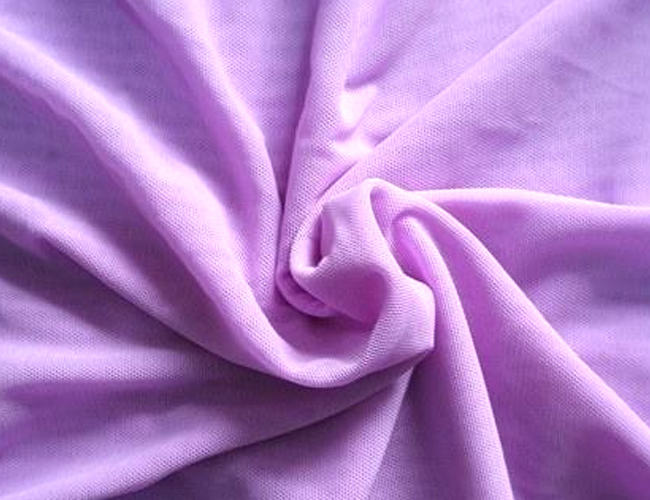
Spandex fabric is a polyester type of artificial chemical synthetic fiber. Because it has very good elasticity, it is also called elastic fiber. Garment fabrics are generally mixed with different proportions of spandex to achieve the role of increasing elasticity and comfort, and are widely used.
The History of Spandex.
In the post-World War II era, DuPont's Textile Fibers Division dominated the global synthetic fiber market.
By the 1930s, DuPont began developing synthetic elastomers.
In the early 1950s, DuPont modified Dacron polyester with an intermediate substance to produce an elastomeric fiber that could withstand high temperatures.
In 1958, DuPont's Benge Laboratory perfected spandex fibers. The nature of spandex allows it to be incorporated into garments other than girdles and undergarments. (A detailed source can be found at: https://en.wikipedia.org/wiki/Spandex#History)
In 1963, Toyo Spinners of Japan began production of spandex under the trademark name "Espa".
In 1964, Bayer in Germany and Fuji Spun in Japan started the production of "Dorlastan" and "Fujibo" respectively. Spandex" brand spandex production.
In 1967, the annual output of spandex in the world had reached 6.8 kt/a, and the number of production plants had grown to 28.
In 1989, the first spandex enterprise in mainland China was Yantai Spandex Factory, which has a production capacity of about 350,000 tons and is the largest spandex producer in the world."
The Process of Spandex Mesh Fabric.
Solution dry method.
Polyether glycol and diisocyanate are formed into prepolymer under certain reaction temperature and time conditions with a molar ratio of 1:2. After the prepolymer is dissolved in the solvent, the diamine is added for chain growth reaction to form block copolymer solution. Then after adding additives, mixing, filtration, defoaming, and other processes to make a uniform performance of the spinning stock solution. Then use the metering pump to quantitatively and evenly press into the spinneret, the spinning liquid from the spinneret capillaries is squeezed out to form a thin stream of silk, into the spinning canal. The canal is filled with hot air (or hot nitrogen) so that the solvent in the thin stream of filament evaporates rapidly and is carried away by air (or nitrogen), and the concentration of filament increases until solidification. At the same time spandex is generally compound silk, before solidification through the twister to hold it together, and finally oiled and wound into a certain volume.
Dry spinning is currently the world's most widely used spandex spinning method. Dry spinning production is about 80% of the world's total spandex production. Its fiber degree is 1.1-123tex, spinning speed is generally 200 ~ 600 m / min, and some can even be as high as 1200 m / min. dry spinning process technology is mature, and the quality and performance of the fibers made are excellent. DuPont, Bayer, Toyobo, and most domestic manufacturers are using solution dry spinning technology.
Solution wet method.
A block copolymer solution is first made from polyester-type diols and diisocyanates in a similar way to dry spinning. The solution is prepared before spinning and sent to the spinning machine, where it is pressed through the metering pump into the spinneret. From the spinneret capillaries pressed out of the original liquid fine flow into the condensation bath. Condensation bath with warm water (90 ℃ or less) as the condensation medium, the solvent in the original fine stream to the condensation bath dispersion, the concentration of polymer in the original fine stream is increasing, forming fibers, and then after washing and drying for winding.
The wet spinning speed is usually 5 ~ 50 m / min, fiber 0.55-7.7dtex. wet spinning skills process is messy, equipment capital costs, spinning speed is low, high production costs. The method has been gradually screened. The current output value of wet spinning accounts for about 10% of the total output value of spandex.
At present, from the global spandex plant capacity, of which the solution dry spinning technology occupies a dominant position. However, its high cost and the use of Jeans pollute the environment and restrict its further development. There is a need to develop environmentally friendly solvent substitutes and new processes to improve raw material utilization and reduce the emission of pollutants.
In addition, melt spinning is a new type of spinning technology with low investment, short construction period, simple production process, high yield, low cost, and no pollution caused by solvents, which is the most promising method of radon spinning.
Features of Spandex Fabric.
- Spandex has very high elasticity. General products do not use 100% of polyurethane, more in the fabric mixed with 5 ~ 30% of the proportion, the resulting variety of spandex fabrics have 15% ~ 45% of the comfortable elasticity.
- Spandex fabric is often made of composite yarn, that is, spandex as the core, with other fibers (such as nylon, polyester, etc.) to do the skin layer made of core yarn elastic fabric. Its good adaptability to the body, very suitable for tight-fitting clothes, no pressure.
- The appearance style and taking performance of spandex stretch fabric are close to the similar products of the covered outer fiber fabric.
Advantages of Spandex Fabric.
- Good elasticity: it can be stretched 5-8 times and does not age.
- Better dyeing performance: it can be dyed into various tonal colors, and the dyestuff has a strong affinity to the fiber and can adapt to most varieties of dyestuff.
- High elongation, low elastic modulus, and high elastic recovery rate.
- Moderate thermal stability: Softening temperature is about 200℃ or more. Most dyes and finishes used for synthetic and natural fibers are also suitable for dyeing and finishing spandex.
- Good chemical resistance: Resistant to most acids and bases, chemicals, organic solvents, dry cleaners, and bleaches, as well as to sun, wind, and snow.
- Spandex is resistant to sweat, seawater and various dry cleaners, and most sunscreen oils.
Disadvantages of Spandex Fabric.
- Poor moisture absorption: the range of moisture absorption is small, generally 0.3-1.2% (the moisture absorption rate of compound silk is slightly higher than monofilament).
- Usually not used alone: often blended with other fabrics. This fiber has both rubber and fiber properties and is mostly used for core-spun yarns with spandex as the core yarn.
- Poor heat resistance: heat resistance varies greatly depending on the species. Most fibers are stored in the range of 90 to 150℃ for a short time and the fibers will not be damaged. The safe ironing temperature is below 150℃ and can be disturbed by heating with wet washing.
- Not resistant to oxides: easy to make the fiber yellow and strength reduction.
Types of Spandex Fabrics.
Spandex is usually found in textiles in four forms: bare yarn, core-spun yarn, covered yarn, and co-twisted yarn.
Spandex bare yarn.
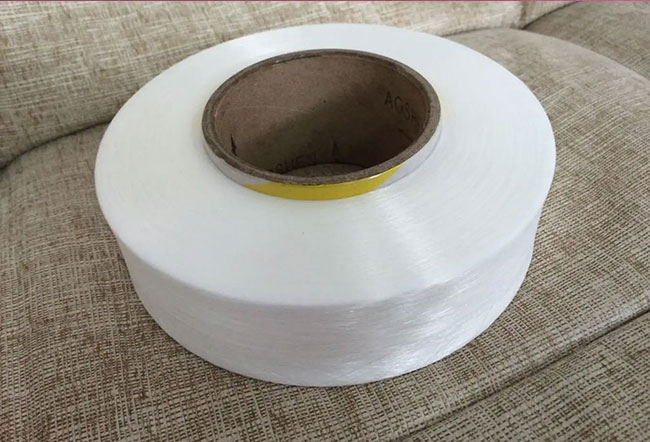
The earliest developed variety of polyurethane spandex has good stretch and recovery properties and can be used in the production of non-woven yarn processing with the advantage of low cost. Due to the high coefficient of friction and poor sliding properties of bare silk, not many are used directly in fabrics and are generally suitable for interweaving with other chemical fiber yarns on knitting machines. The main textiles are tights, sportswear, leggings, surgical bandages, socks, cuffs, etc.
Corespun yarn.
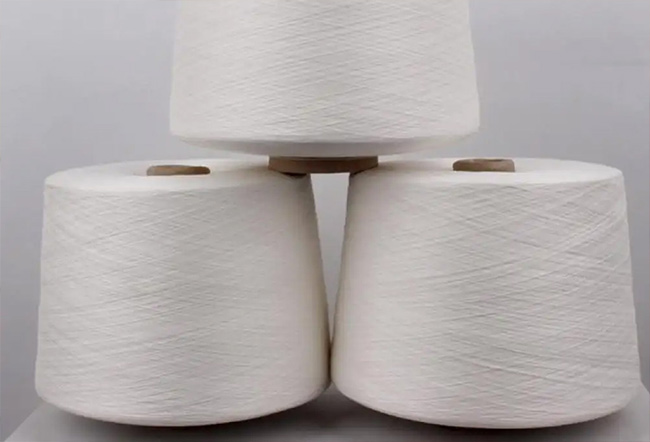
Corespun yarn is a yarn with spandex yarn as the core, the core layer provides excellent elasticity and the outer fibers provide the desired surface characteristics. For example: In addition to good elasticity, cotton corespun yarn maintains the feel and appearance of normal cotton yarn. It has the style, feel, and performance of cotton, and can be made into a variety of cotton-type fabrics. Its strength is lower than other elastic yarns, and its dyeing effect is good. Cored yarn is the most widely used yarn variety in polyurethane elastic fiber.
Covered yarn.
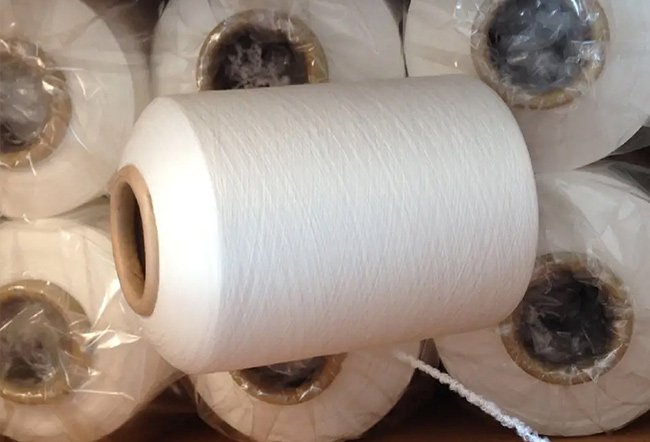
Covered yarn is an elastic yarn made of polyurethane elastic fiber as the core, which is covered with synthetic fiber filament or yarn in a spiral pattern. It has a stiffer feel and thicker yarn, and the fabric is thicker. It is mainly used for elastic fabrics such as leggings, elastic belts, sock gags, and socks.Twisted yarn.
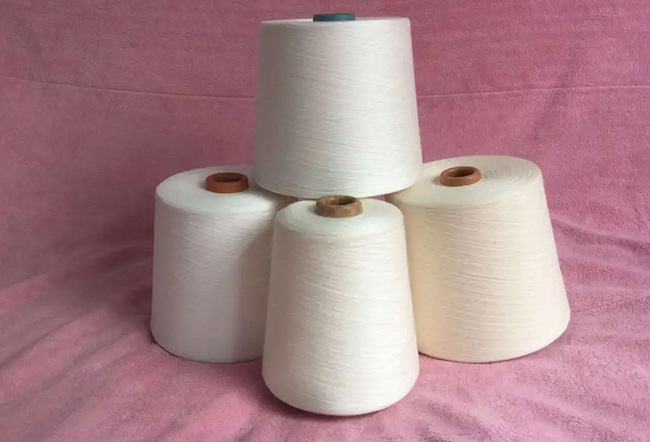
Twisted yarns are made by drawing polyurethane elastic fibers and twisting them together with two other inelastic yarns. They are mostly used for thick fabrics such as elastic labor cloth and elastic single-sided waffles. The advantage is that the strip is uniform and the product is clean. The disadvantage is that it is slightly hard to the touch, and some elastic fibers are exposed outside, which makes it easy to cause color differences when dyeing. Therefore, it is generally not used for dark fabrics.
The Use of Spandex Fabric.
Spandex fabric is a polyurethane type fiber, also named spandex because of its excellent elasticity, and is used in large quantities in apparel fabrics. Spandex is generally not used alone but mixed in small amounts into fabrics for garments that need to be stretchable to meet comfort requirements.
Such as professional sportswear, fitness clothing, exercise clothing, diving suits, swimming suits, competition swimsuits, basketball uniforms, bras and suspenders, ski pants, disco, jeans, casual pants, socks, leggings, diapers, tights, straps, underwear, jumpsuits, spandex bodysuits, male ballerinas with straps, protective clothing for surgery, protective clothing for logistics troops, short sleeves for cycling, wrestling undershirts, Rowing suit, underwear, performance costumes, qualitative clothing, etc. Such as bras, home decorations, and micro-bead pillows.
Does Spandex Fabric Pucker Easily?
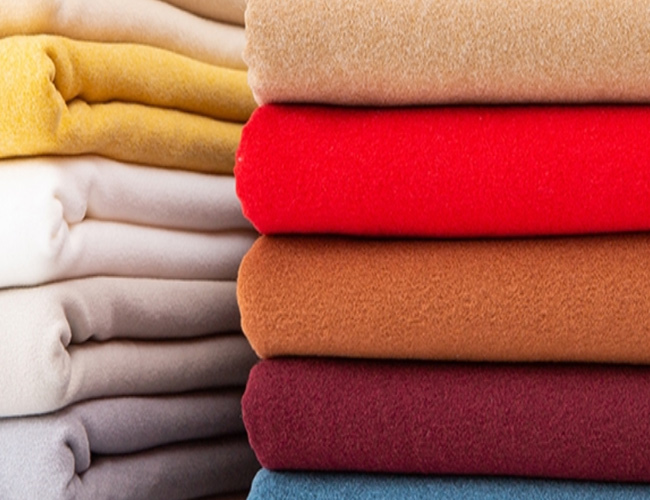
In general, spandex will not be pilling, if spandex and other materials of fabric are blended will appear pilling. The root cause of this phenomenon is that the fabric is made of various fibers made of yarn cross weave, this yarn fiber contains short fibers. When people wear on the body and other clothing friction, short fibers will be exposed from the yarn, resulting in clothing pilling.
Does Spandex Fabric Shrink?
Spandex fabric does not shrink easily, it is a material that increases elasticity. 15% spandex is generally used for clothing that is tight fitting. Modified size in order to soothe a variety of body adaptability and increase the slimming effect.
For example, cotton spandex clothes, cotton itself is a natural fiber, and moisture absorption is good. But cotton clothes wear a sense of poor, appropriate plus spandex clothes have elasticity, wearing comfort performance improvement. General wool-like clothes or clothes containing acrylic will shrink because of the structure of wool. But pay attention to the clothing washing conditions.
Spandex Fabric Cleaning and Maintenance.
How to wash spandex fabric:
- The best water temperature for washing is 40℃~50℃.
- Good resistance to alkali and heat: all kinds of detergents are available, hand washable and machine washable.
- Do not use detergent or washing powder containing bleaching ingredients to avoid decolorization, and do not pour washing powder directly onto the cotton fabric to avoid local decolorization.
- The elasticity of cotton fiber is poor: do not wash with a large frustration, so as not to change the shape of the clothes, affecting the size.
- It is advisable to dry in the shade and avoid exposure to the sun to avoid fading of dark clothes. When drying in the sun, turn the inside out.
- Light colors and white can be soaked for 1 to 2 hours after washing to remove stains better. Dark colors should not be soaked for too long to avoid fading and should be washed in time. A spoonful of salt can be added to the water to make the clothes less likely to fade.
- Dark clothes should be washed separately from other clothes to avoid staining.
- White clothes can be washed at a high temperature with a strong alkaline detergent, which acts as bleach. Intimate underwear should not be soaked in hot water so that the proteins in the sweat stains do not solidify and adhere to the garment. Other color shirts are best washed in cold water."
How to maintain spandex fabric:
- Do not expose to the sun for a long time, so as not to reduce the firmness and cause fading and yellowing.
- Wash and dry, separate dark and light colors.
- Pay attention to ventilation, and avoid moisture, in order to avoid mold.
- Do not soak underwear with hot water to avoid yellow sweat spots.
Is Spandex Fabric Suitable for Summer Wear?
In summer, it is not hot to wear spandex. Because the weight of spandex is so heavy just because you want the clothes to become very elastic, the main function of spandex is to increase the elasticity and play a slimming effect. And after all, spandex fabric itself is able to breathe. Clothing also contains the composition of cotton, cotton can absorb moisture, and breathability is very good.
Is Spandex Fabric Harmful?
It is not harmful to the human body.
Spandex is not harmful to the human body. And in fact, many clothes in our life contain a small amount of spandex, which is a kind of elastic fabric. It is used in the fabric of many types of clothes, such as swimwear or sportswear and shoe soles. And there is also a percentage of spandex to help add elasticity and comfort to the fabric of many clothes, such as underwear, which may have 5% spandex.
Harmful to the environment.
The main pollutants in the production of spandex are wastewater, waste residue, and waste gas, which can be harmful to the environment if not treated properly. But as long as these pollutants are treated well, not only can the sustainable development of the enterprise be improved, but also the resource utilization rate and the harm to the human body can be reduced. Reduce the emission of pollutants and research and develop environment-friendly production processes. Otherwise, it will cause irreparable damage to the earth's environment.
Polyester, Nylon, Lycra vs Spandex Fabric.
Polyester vs spandex fabric.
Features: Stiff and non-wrinkled, high strength, good impact resistance, heat resistance, corrosion resistance, moth resistance, acid resistance not alkali resistance, very good light resistance, poor moisture absorption, dyeing difficulties, fabric easy to wash and dry quickly good conformability.
Burning aromatic smell, ashes of black-brown glass spherical can be twisted by hand.
With the characteristics of "washable" uses.
Filament: often used as low-stretch yarn, making a variety of textiles.
Staple fiber: cotton, wool, hemp, etc. can be blended.
Nylon vs spandex fabric.
Nylon fabric has excellent elasticity and elastic recovery. However, it is easy to deform under small external force, so its fabric is easy to become wrinkled in the process of wearing. Poor ventilation and air permeability, easy to generate static electricity.
The use of nylon fabric.
Suitable for making mountain climbing clothes, winter clothes, etc. Clothing made of nylon is more comfortable to wear than polyester clothing. It has good resistance to moth and corrosion.
Lycra vs spandex fabric.
Lycra fabric is also known as spandex fabric(elastic fiber).
Features: the best elasticity, the worst strength, poor moisture absorption, good light, acid, alkali, and abrasion resistance.
The use of lycra fabric.
Spandex is widely used in the textile and medical fields such as lingerie, underwear for women, casual wear, sportswear, short socks, pantyhose, bandages, etc. Spandex is a highly elastic fiber necessary for high-performance garments that seek movement and convenience. Spandex stretches 5-7 times longer than its original shape, so it is comfortable to wear, soft to the touch, wrinkle-free, and always maintains its original silhouette.
Conclusion.
The above is the full introduction to spandex fabrics. If you need wholesale spandex fabric and other wholesale fabrics find G&F GROUP INC., we have been focusing on all kinds of R&D and overseas sales for a long time since 20 years, with complete varieties and professional services, one-stop full service, so that you can purchase without worry. Our main products are non-woven fabrics, non-woven products, non-woven interlining fabrics, woven interlining fabrics, netting, lace, and lining fabrics. Welcome to leave a message on our email: [email protected]
All Rights Reserved: https://www.groupgf.com/info-detail/spandex-fabric
Copyright Notice: This is an original (translated) article from G&F Group Inc., please indicate the source from G&F Group Inc. If there is any infringement, please contact us first.






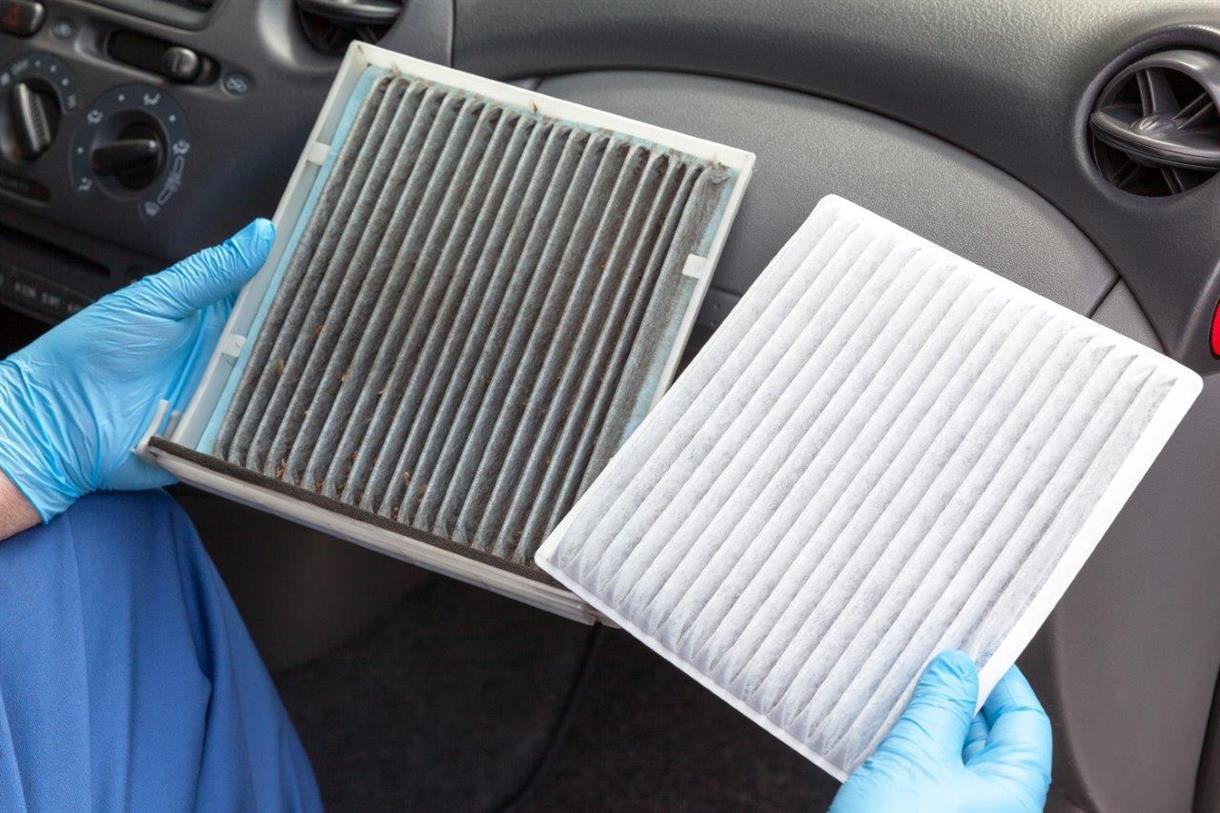 Nonwovens in daily life ----- filtration
Nonwovens in daily life ----- filtration
 Nonwovens in daily life ----- automotive
Nonwovens in daily life ----- automotive
 What is SAP – superabsorbent polymers
What is SAP – superabsorbent polymers
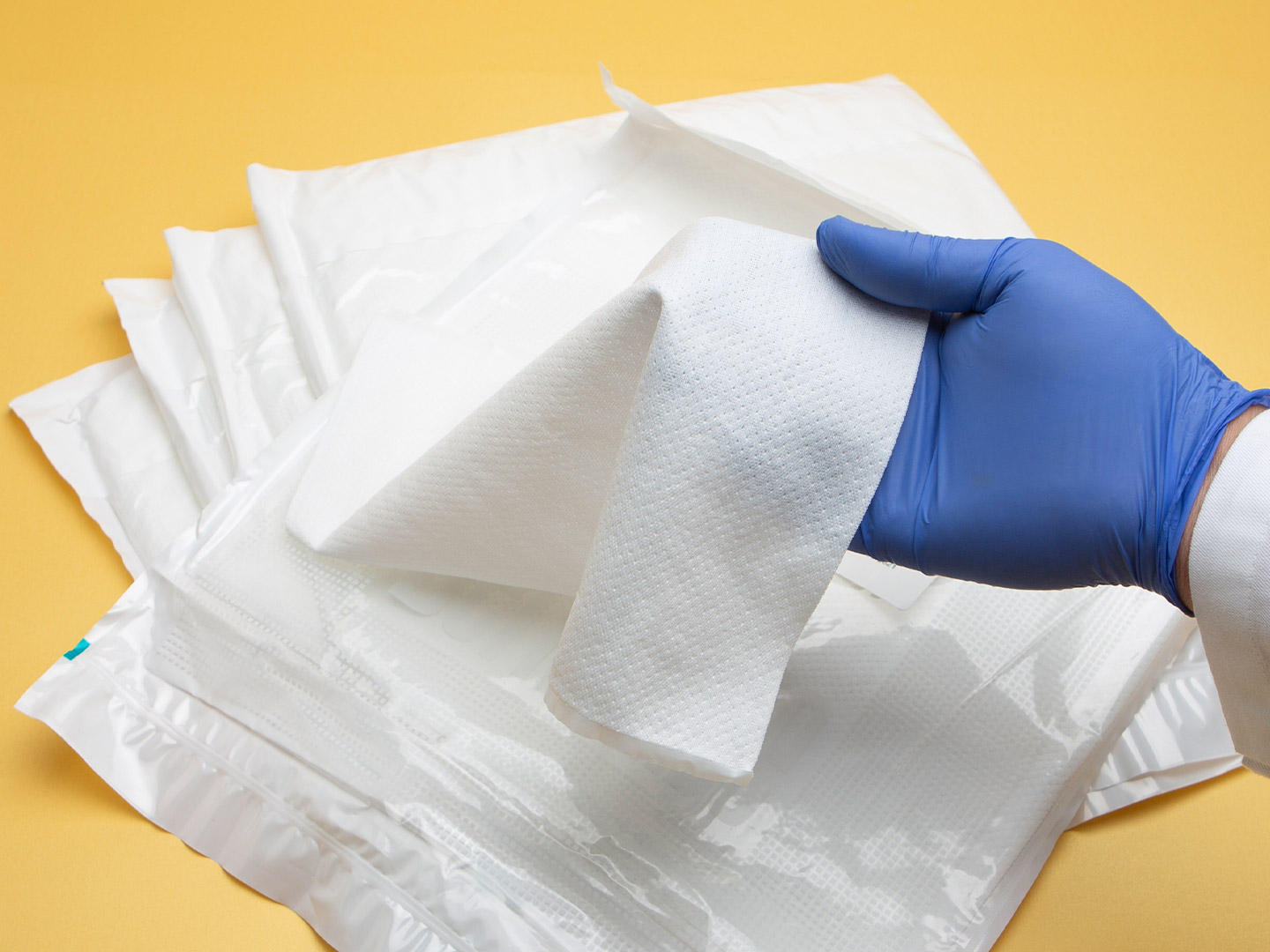 The Future of Global Nonwoven Wipes to 2029
The Future of Global Nonwoven Wipes to 2029